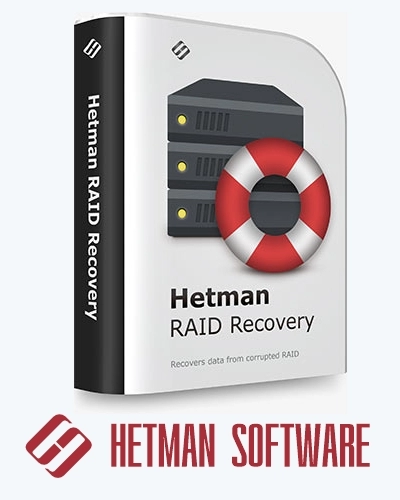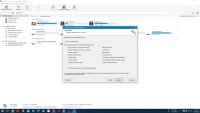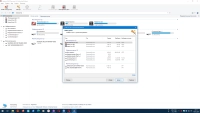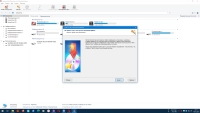If you’re struggling to find Hetman RAID Recovery 2.6, HaxNode offers a reliable solution. Known for its wide range of direct links, torrents, and pre-activated software, HaxNode ensures easy access to the programs you need without the usual hassle. Whether you’re a professional seeking industry-specific tools or an enthusiast looking to explore new utilities, HaxNode is your go-to resource for straightforward, secure software her!. You may also like Video frame recovery Topaz Video AI
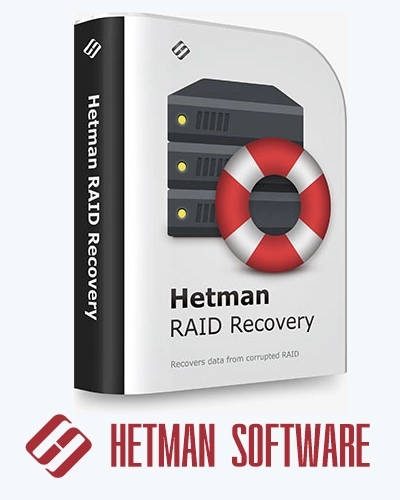
Hetman RAID Recovery is a universal solution for restoring RAID performance and data lost as a result of destruction. To use the program you do not need to have advanced computer knowledge or be an engineer or have experience in the field of restoration.
System requirements:
Microsoft Windows XP / 7 / 8 / 8.1 / 10 / 11
Microsoft Windows Server: 2019 / 2016 / 2012 / 2008
Torrent Hetman RAID Recovery 2.6 in detail:
The program recovers data from non-working RAID arrays or disks that were part of it. The utility reads from the system all information about the controller, motherboard or software on which the disk array was created. The product recreates a destroyed RAID and allows you to copy critical information from it.
The built-in reconstruction wizard allows you to restore a failed RAID in a step-by-step manner. You can use one of the saved “presets” or specify some parameters of the damaged array yourself, after which RAID Recovery™ will assemble the individual drives together and provide access to the data.
Additional Information:
Restoring RAID using data from the system
Collecting all possible information from the system and connected drives, the utility displays automatically collected arrays to the user immediately when the program starts. In most cases, the program recreates the RAID on the fly and offers to analyze the partitions found on it to save data.
Auto mode
This mode asks the user for the number of disks included in the array and the disks themselves. The program then iterates through all possible RAID combinations that could be built on the specified number of disks.
Using all received array combinations, the program tries to find the file system structure – logical partitions, directory tree and files. If file system elements are detected, the utility offers to save this configuration for subsequent search and recovery of files.
This approach allows you to restore RAID even if the user does not know the block size, RAID type, and rules for writing blocks to disk. However, when trying through combinations of 6 or more disks, this process can take a long time.
“Presets” for popular systems
The program contains combinations of possible arrays from popular controller manufacturers, as well as software or combined RAID systems. Using manufacturer data, the utility will be able to reduce the list of options to search through and the time spent searching for a configuration.
Recreate any RAID manually
In manual RAID creation mode, you can create an array with any configuration. The program requests the RAID type, the disks it consisted of and their order, as well as such optional parameters as the Parity block offset rule, block size, Parity delay. This mode is designed for a professional user and allows you to quickly and accurately indicate data about a destroyed RAID. The system will select optional parameters automatically.
Creating and scanning a disk image
The utility allows you to create an image of any storage medium or a separate logical partition. In the future, you can connect this image to the program and continue the process of collecting RAID, as well as restoring data from it. RAID Recovery™ supports both creating an image in its *.dsk format and working with images: *.hdd, *.vdi, *.vhd, *.vhdx, *.vmdk.
Recovering deleted files from RAID
The program recovers accidentally deleted files from disk arrays, as well as lost data after emptying the Recycle Bin of Windows, macOS, Linux, FreeBSD, OpenBSD, NetBSD, Solaris systems. Run an analysis of an entire logical partition or RAID disk, and the utility will display the files found for recovery.
Recovery after formatting or deleting a RAID partition
The program finds deleted files even if the file system structure is completely fragmented. By scanning the entire drive, RAID Recovery™ finds: the boot sector (and all copies of it), the drive’s partition table, the root directory, logs, and information about existing and deleted files on the drive.
Using this data, the utility recreates the structure of files and folders on the disk, and displays it to the user as a regular file manager. If all service information is erased, the contents of the files can be restored using a “signature search” on the disk.
Recovering incomplete RAID arrays
Typically, RAID systems are designed to recover if one of the disks fails. Only in the case of RAID 6/60 is it possible to rebuild after the failure of two disks. But it is often necessary to recover data after the complete or partial loss of two or more disks.
This means the loss of a large part of the disk file system information, as well as the loss of some of the contents of large files. The utility will combine the data that survived on the disks included in the array, calculating the missing parts using special formulas from Parity blocks. Blocks with missing information will be replaced with empty ones, this will allow you to put the array together and return the saved data.
Treatment procedure:
Before installation, it is recommended to disable the Internet and antivirus. Install the program
Register the program using keygen. Select Developer: Hetman Software in the window. In the Product: Hetman Raid Recovery window. In the window Name: what do you want…
Download Hetman RAID Recovery 2.6 via torrent:
Special Note
⚠️ Important: Do not use cracked software! Choose authentic versions for safety. Our software is for educational purposes, gathered online. Download responsibly. Regards, HaxNode 🛡️

